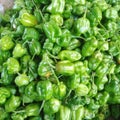Find results that contain all of your keywords. Content filter is on.
Search will return best illustrations, stock vectors and clipart.
Choose orientation:
Make it so!
You have chosen to exclude "" from your results.
Choose orientation:
Explore cartoons & images using related keywords:
agriculture
arid
bc
born
bountiful
brought
civilization
collaboration colonization conserve country cultivation designed east environment extremely farm field food grass grassland green harvest harvests history holyday hydraulic intermediate international intricate island kumbura lanka lankan leading man meadow nature north paddy pasture place plain plant plantation plenty prairie produce protecting provinceSri Lankan Green Paddy Field Harvest North Western Province Royalty-Free Stock Image
Designed by
Title
Sri Lankan green paddy field harvest North Western Province #251408254
Description















